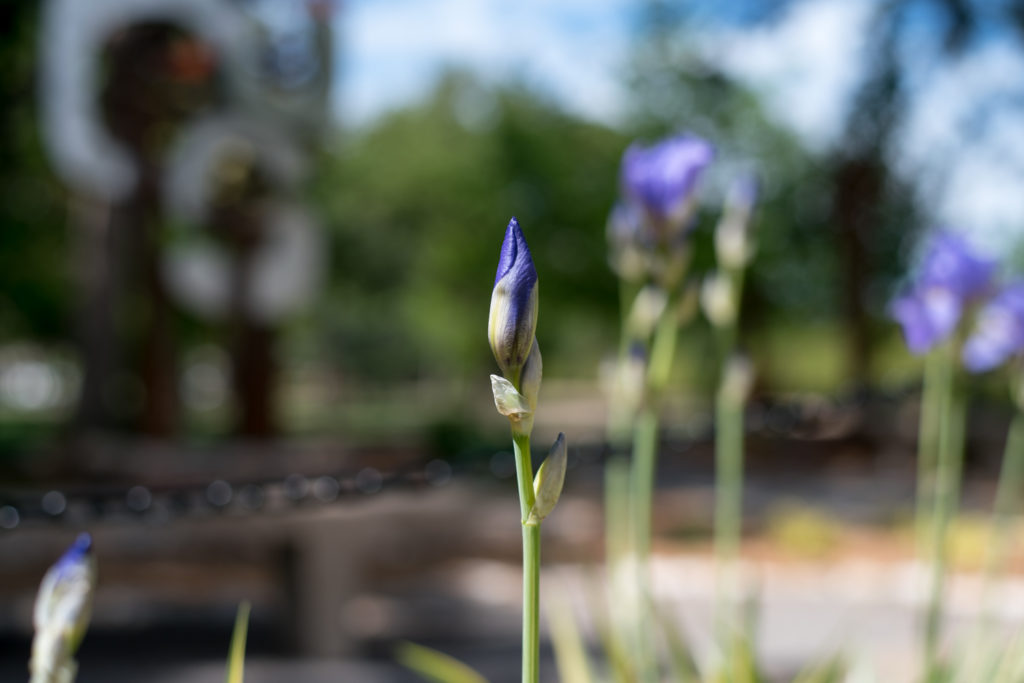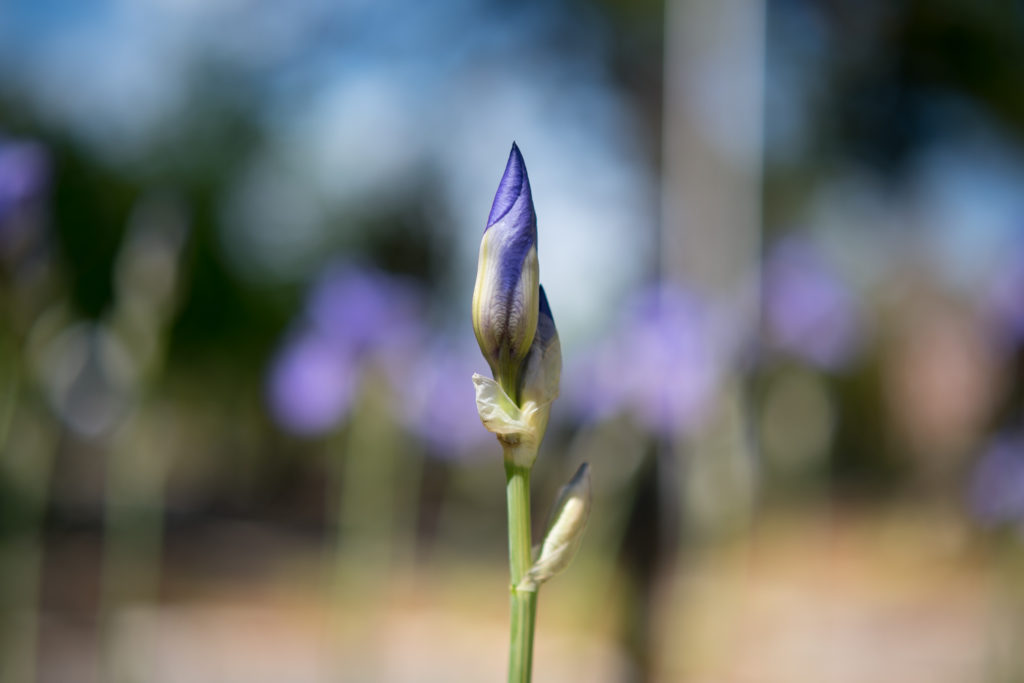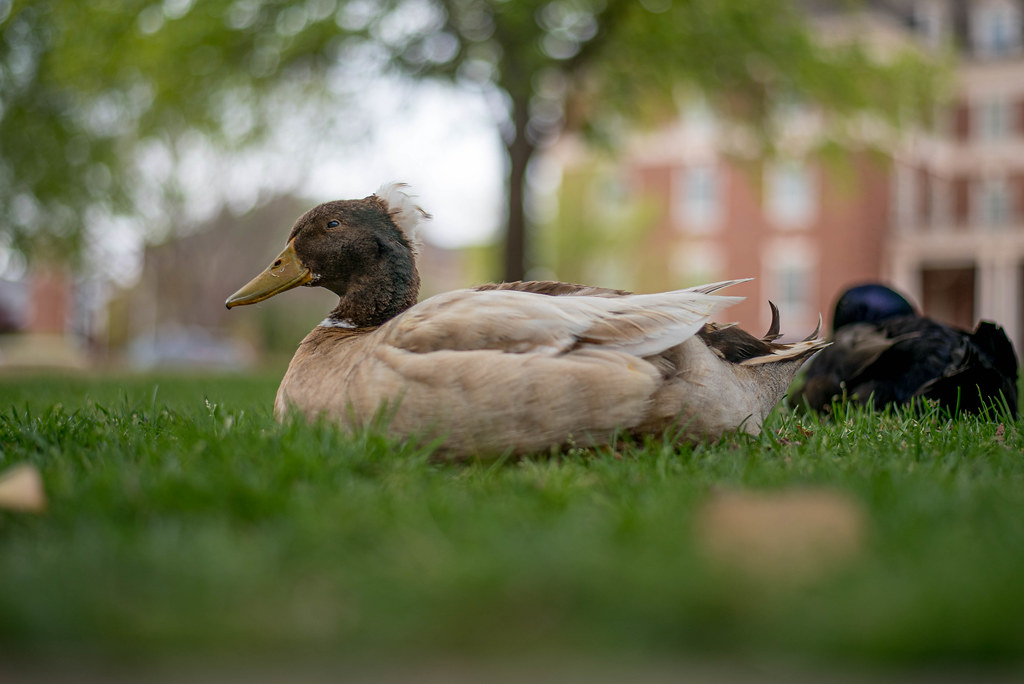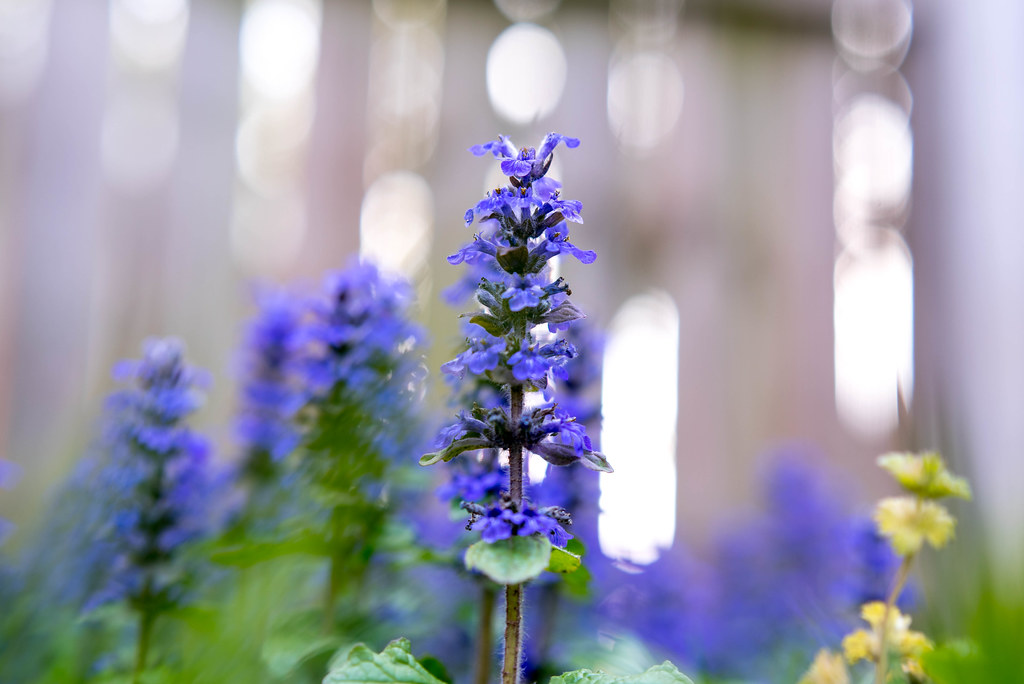
This photo was an exercise in condensing years of photographic experience down to about a five-minute time span. In order to get this shot I had to think about lighting, aperture, depth of field, sharpness, background objects, foreground objects (which I finally had to just nudge aside) and even small breaths of wind. It seems like a pretty basic image, but a lot of thought and careful consideration went in to what you see here.
I was out for a walk around Theta Pond in late April, looking for natural colors amidst a sea of browns and greens, when I saw a small patch of purple flowers near the southeastern edge of the pond right by University avenue. Most of the flowers were open and drooping, but some, such as this one, had yet to spring forth which made them ideal photography subjects. I basically tried a series of techniques while working my way closer, closer, and closer to finally get this picture which was, literally, the last one I shot during my time at this particular spot. Out of 42 images this was the one I liked the most, and even though there’s just a few things I might have done differently in retrospect I really like the deep purples, rich greens, and contrast between dark and light.
When I saw this flower I first thought about the direction of light, and realized I would need to scoot around to a different part of the flower bed so the sun was over my left shoulder. I took a photo with my 50mm lens at f/2.8, getting about as close as I could to the flower, and ended up with this:

It’s not bad, but there’s way too much going on and it’s hard to find a subject amidst all the other elements. When this happens you have two options:
- Crop the final image
- Get closer to the subject
Cropping wouldn’t really solve the problem of the busy background, but thankfully I had my set of close-up filters in my pocket which would let me close the gap between my lens and the flower quite considerably. Taking a cue from my experience photographing the Indian Paintbrush flower that I shared on May 5, I attached my +2 filter which I thought would give me the picture I was going for:

While this second approach was certainly improved, I still wasn’t happy with the way the subject didn’t quite stand out from the background as much as I was going for. Also, as I was reviewing my photos on the spot I noticed that giant vertical bar of light which was hugely distracting. These problems were both mitigated by me switching to my +4 filter and scooting to the side just a bit so that background element was no longer in the shot. The result is the photo you see at the top of this post, which had a beautifully blurry background and required no cropping whatsoever. I shot it at f/2.8 which is kind of asking for trouble when shooting close-up, and you can see one problematic artifact as a result: the depth of field is so shallow that the top of the flower is just a bit out of focus. I think if I were to re-do this shot I would go with f/4 to get a sharper subject, but that might compromise the beauty of the background…and I’m not sure that’s a tradeoff I’d be willing to make.
This type of shot (single subject, blurry background) is one I have done many, many times over the years on Weekly Fifty but it’s a composition that I really like returning to because the results just make me happy. It’s really fun to get shots like this, and it’s a great showcase for the versatility of the classic Nifty Fifty lens :)



